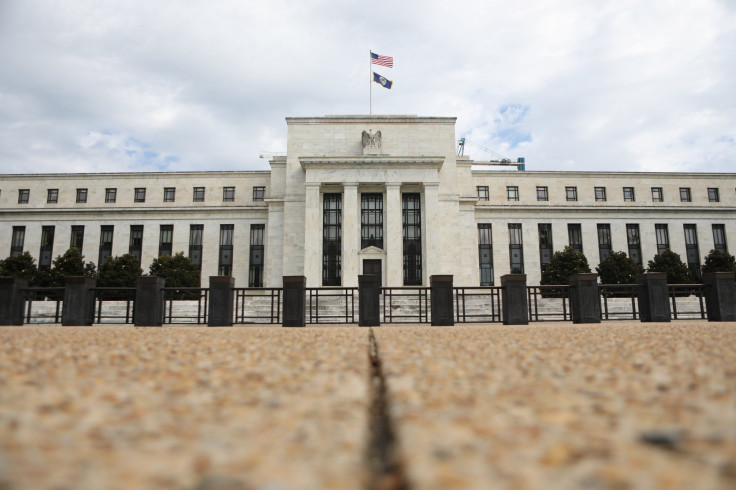The Federal Reserve Gives The Stock Market A Pleasant Surprise

The Federal Open Market Committee (FOMC) concluded its two-day March meeting on Wednesday. Although investors were not expecting any interest rate changes, there were still quite a few things to watch out for -- especially the Fed's long-term economic outlook.
After the announcement of the interest-rate decision, along with the FOMC's statement and projections on interest rates and economic indicators, the stock market nearly erased a substantial midday loss, indicating that investors were rather happy with what they heard. With that in mind, here's a rundown of what we just learned from the Fed, and what it could mean.
Interest rates aren't changing
As was widely expected, the FOMC, which is the policymaking arm of the Federal Reserve, held interest rates steady. The target range for the benchmark federal funds rate remains 2.25% to 2.50%.
So, no surprises here. But that's about all that didn't surprise the markets from the March FOMC meeting.
The dot plot
Along with its interest rate decision, the FOMC also releases its dot plot, a chart that shows the interest rate projections of the committee's voting members. This dot plot included projections for interest rates at the end of 2019, 2020, and 2021, as well as over the longer run.
The market got a big positive surprise here that is likely the primary reason for its afternoon rally. In the Fed's December dot plot, the median expectation called for two rate hikes in 2019. Going into this meeting, many experts had predicted that the FOMC might reduce this expectation to a single rate hike.
So it was unexpected when the median expectation on the March dot plot showed the federal funds rate at 2.4% at the end of 2019, which is within the current target range. In other words, the FOMC now anticipates that no additional interest rate hikes will be necessary this year.
At the end of both 2020 and 2021, the Fed projected a median federal funds rate of 2.6%, which implies one rate hike in 2020. In its longer-term outlook, the committee sees the federal funds rate at a median of 2.8%, which implies a total of two more rate hikes. But one of them wouldn't happen until after 2021.
The statement
This time around, the FOMC's statement sounds less optimistic (but certainly not pessimistic) about the current and future state of the U.S. economy. The most significant change from its previous statement came in telling phrase "growth of economic activity has slowed from its solid rate." Previously, the Fed characterized the economy as "rising."
Other, smaller changes were made that are in line with the Fed's overall view of a slowing economy. This statement called job gains "solid" rather than "strong," and described the labor market as "remains strong," where in the prior meeting it said the labor market "continued to strengthen."
Economic projections
The FOMC also reports projections for inflation, unemployment, and gross domestic product (GDP) growth. On all three fronts, the FOMC downgraded its economic forecast. Here's the rundown of what changed:
- The FOMC now sees 2019 inflation at 1.8%, down from its previous forecast of 1.9%.
- It sees 2019 year-end unemployment at 3.7%, higher than its previous estimate of 3.5%. However, from a longer-term standpoint, the committee sees unemployment at 4.3%, which is slightly better than the previous 4.4% forecast.
- GDP growth is now seen at 2.1% for 2019, down from 2.3% previously.
In a nutshell, the Fed sees lower inflation, higher unemployment, and slower economic growth than previously expected. That's why the committee no longer anticipates raising rates further in 2019.
The balance sheet reduction plan
The Federal Reserve in October 2017 began to reduce its balance sheet, which peaked at more than $4.2 trillion, at a rate of as much as $50 billion of Treasuries per month ($30 billion currently). In all, about $450 billion has been shed from the balance sheet since then. One point investors have been waiting for clarification on is the Fed's target -- that is, when will the FOMC decide to pump the brakes on its balance sheet reduction.
Investors got some additional positive news here, too. The Fed announced that it plans to start tapering its balance sheet reduction starting in May, trimming its Treasury roll-off in half to $15 billion per month, and to end it entirely before October.
The Foolish bottom line on the March Federal Reserve meeting
To sum it up, investors seem to be breathing a sigh of relief after the March FOMC meeting. There have been lingering fears over the past few months that the Fed could end up raising interest rates too quickly and inadvertently take the momentum out of the U.S. economy. It looks like that fear can be put to rest, at least for the remainder of 2019.
This article originally appeared in the Motley Fool.
The Motley Fool has a disclosure policy.





















